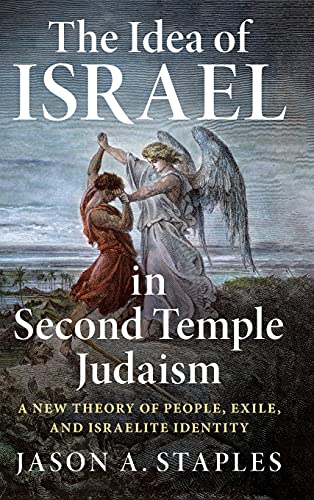
The Idea of Israel in Second Temple Judaism: A New Theory of People, Exile, and Israelite Identity PDF
450 Pages·2021·4.4083 MB·other
Most books are stored in the elastic cloud where traffic is expensive. For this reason, we have a limit on daily download.
Preview The Idea of Israel in Second Temple Judaism: A New Theory of People, Exile, and Israelite Identity
Description:
In this book, Jason A. Staples proposes a new paradigm for how the biblical concept of Israel developed in Early Judaism and how that concept impacted Jewish apocalyptic hopes for restoration after the Babylonian Exile. Challenging conventional assumptions about Israelite identity in antiquity, his argument is based on a close analysis of a vast corpus of biblical and other early Jewish literature and material evidence. Staples demonstrates that continued aspirations for Israel’s restoration in the context of diaspora and imperial domination remained central to Jewish conceptions of Israelite identity throughout the final centuries before Christianity and even into the early part of the Common Era. He also shows that Israelite identity was more diverse in antiquity than is typically appreciated in modern scholarship. His book lays the groundwork for a better understanding of the so-called ‘parting of the ways’ between Judaism and Christianity and how earliest Christianity itself grew out of hopes for Israel’s restoration.
* Traces the development of the concept of ‘Israel’ from the Bible into the first century AD
* Offers a new paradigm for understanding the relationship between the terms ‘Israelite’ and ‘Jew’ in antiquity, explaining the connection between that terminology and the apocalyptic restoration hopes of many Jews in the Second Temple period
* Provides a close reading of a vast corpus of biblical and other early Jewish texts, integrating data and questions typically isolated or treated differently across the fields of Hebrew Bible/Old Testament, New Testament, Jewish Apocrypha/Pseudepigrapha, Philo, Josephus, Dead Sea Scrolls, and history of Judaism
After examining and rejecting the common presupposition that only Judaeans were Israelites (an ideology that can be termed ‘solajudaeanism’), Staples synthesizes several interdisciplinary gains made over the last several decades in order to make the most comprehensive and convincing case to date regarding the NT fulfillment of the prophesied messianic reunification of ‘all Israel,’ both southern Judaean Israelites, northern Samaritan Israelites who remained in the land, and his most distinctive theory re inclusion of descendants of exiled northern Israelites in the larger gentile world.
* Traces the development of the concept of ‘Israel’ from the Bible into the first century AD
* Offers a new paradigm for understanding the relationship between the terms ‘Israelite’ and ‘Jew’ in antiquity, explaining the connection between that terminology and the apocalyptic restoration hopes of many Jews in the Second Temple period
* Provides a close reading of a vast corpus of biblical and other early Jewish texts, integrating data and questions typically isolated or treated differently across the fields of Hebrew Bible/Old Testament, New Testament, Jewish Apocrypha/Pseudepigrapha, Philo, Josephus, Dead Sea Scrolls, and history of Judaism
After examining and rejecting the common presupposition that only Judaeans were Israelites (an ideology that can be termed ‘solajudaeanism’), Staples synthesizes several interdisciplinary gains made over the last several decades in order to make the most comprehensive and convincing case to date regarding the NT fulfillment of the prophesied messianic reunification of ‘all Israel,’ both southern Judaean Israelites, northern Samaritan Israelites who remained in the land, and his most distinctive theory re inclusion of descendants of exiled northern Israelites in the larger gentile world.
See more
The list of books you might like
Most books are stored in the elastic cloud where traffic is expensive. For this reason, we have a limit on daily download.
